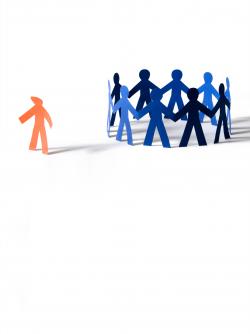The Miracle at Midway
World War II saw one of the greatest naval victories in history. When historians and Hollywood filmmakers tell the tale of Midway, what important truth do they ignore?
The recent release of the movie Midway has once again focused attention on one of the most significant battles of World War II—and an amazing turning point in the war in the Pacific. At stake in this deadly contest was the future of the United States and the Japanese Empire. A series of remarkable events during this ferocious naval engagement suddenly altered the course of the battle and dramatically changed the course of the war—not to mention the course of history.
What were those remarkable events that caused the sudden reversal for both the Americans and the Japanese? What lessons can we learn from a momentous battle fought nearly 80 years ago near two little islands in the central Pacific? And why are those lessons important to each of us today?
Numerous books have tried to explain why the Japanese lost a pivotal battle they were confident of winning, and why American forces suddenly prevailed in the Pacific theater when they should have been destroyed. Historians point to decisions by commanders, mistakes in combat, different battle tactics, better intelligence information, and particular weather conditions. Another factor often credited for the surprising turn of events during the Battle of Midway is just plain luck! In the 1976 movie Midway, actor Henry Fonda, in the role of Rear Admiral Chester Nimitz, famously asked, “Were we better than the Japanese, or just luckier?” Indeed, the Americans appeared to benefit from more than a little “luck,” while the Japanese seemed to come up short again and again during the battle.
As we will see in this article, there was more to Midway than just being lucky or unlucky! There was another vital factor in the amazing turn of events—one that historians often seem to sense and hint at, but seldom mention directly. As we examine the remarkable series of events that contributed to the surprising conclusion of the Battle of Midway, the nature of this vital factor will become more obvious.
Setting the Stage
How did American and Japanese forces find themselves in a life-and-death struggle in the middle of the Pacific Ocean, thousands of miles from their homelands? The two nations were thrust into deadly conflict with a surprising and devastating raid by Japanese planes on the American naval base in Hawaii on December 7, 1941, which then-President Franklin Roosevelt called “a date which will live in infamy.” The raid on Pearl Harbor was part of Japan’s plan to destroy American naval power in the western Pacific and extend the power and influence of the Japanese Empire. The dawn raid crippled America’s naval capability in the Pacific Ocean, and in succeeding days, the Japanese invaded the Philippines, sank two British battleships in the Indian Ocean, and overran Singapore—the “Gibraltar of the East.” For six months after the attack on Pearl Harbor, Japanese attack forces were unstoppable, going from victory to victory, while America and its allies reeled from defeat after defeat. During this time, a Japanese submarine surfaced off the coast of California and spent nearly half an hour shelling an oil refinery near Santa Barbara, before sailing down the coast on the surface and finally submerging and disappearing into the Pacific Ocean.
In an attempt to land a counterpunch, Lieutenant Colonel James Doolittle led 16 carrier-based American bombers on a surprise raid on several Japanese cities, dramatized in the film Thirty Seconds Over Tokyo. However, running out of fuel, many of the American bombers crash-landed along the coast of China. In response to the raid, the Japanese inflicted severe reprisals on the Chinese—burning villages and killing some 250,000 civilians in areas that appeared to aid the downed American flyers.
Flushed with success and brimming with confidence—and, perhaps, desirous for a bit of revenge—Japanese Admiral Yamamoto planned to extinguish American naval power in the Pacific by invading Midway, a crucial point for controlling Pacific sea-lanes. He hoped to draw the American carriers into a trap where they would be destroyed by Japanese battleships in one final cataclysmic engagement, after which the defeated Americans would sue for peace. That was the plan. What the Japanese did not realize was that just days before the fateful Battle of Midway, the Americans had cracked the Japanese military code and learned the location of the impending attack. When the powerful Japanese carrier attack force arrived in the waters just off Midway, the Americans were already in position—watching and waiting.
What Happened at the Battle of Midway
On the morning of June 4, an American scout plane from Midway spotted the Japanese armada just as the plane was running low on fuel. American bombers were sent from Midway in response, but hours later when they reached the Japanese armada, none of their bombs struck their intended targets—a reflection of just how difficult it is to hit a moving target on the ocean from a high altitude.
The first wave of planes that attacked Midway from the Japanese carriers inflicted considerable damage, but the squadron leader felt a second attack would be needed, so Japanese Admiral Nagumo ordered the returning planes to be reloaded with bombs. Then, when he learned that American carriers were in the vicinity, he ordered the planes rearmed with torpedoes—all of which took precious time.
During this time, planes from the American carriers began attacking the Japanese carriers. The Japanese ships changed course, so they were not where the American pilots thought they should be. In fact, most of the fighters and dive-bombers from one carrier, unable to find the Japanese fleet, returned to the carrier or ran out of fuel and ditched in the ocean. However, the leader of the American torpedo bomber squadron, playing a hunch, found the Japanese carriers and immediately attacked. But the American torpedo bombers were slow and had to fly in a straight line just above the waves to launch their torpedoes. In this position and without fighter protection, the bombers were extremely vulnerable to antiaircraft fire and the much faster Japanese fighters, the “Zeros.” All of the torpedo bombers were lost without inflicting any damage on the Japanese carriers. During the engagement, an American submarine launched a torpedo at the Japanese destroyer Arashi, but the torpedo missed, and the destroyer chased the sub away.
Dive-bombers from the American carriers had found no Japanese ships when they arrived at their initial destination. However, the squadron leader happened to notice the wake of the Japanese destroyer Arashi racing to rejoin the Japanese fleet, and he followed it directly to the Japanese carriers. When the American dive-bombers arrived, they found the sky above the carriers clear of Japanese fighter planes. The Zeros had all been ordered down to strike low-flying American torpedo bombers. The incredible result was that within about five minutes, three Japanese carriers were shattered by explosions and enveloped in flames from bombs dropped by the unopposed American dive-bombers. The mighty and menacing Japanese armada was severely crippled in a matter of minutes. A few hours later, the fourth carrier of the Japanese fleet was dealt with in a similar manner. The attacking Japanese force, intent on trapping and annihilating the American carrier force, had itself sailed into a deadly trap and was decisively defeated—losing four carriers, 330 planes, and 2,500 soldiers—irreplaceable pilots and highly trained ground crews. The Americans lost one carrier, one destroyer, 147 planes and 307 men.
Military historian John Keegan described it as “the most stunning and decisive blow in the history of naval warfare” (The Second World War, 2005, p. 275). The unexpected American victory at Midway turned the tide of the war in the Pacific and changed the course of history.
The Miracle of Midway
On the morning of June 4, 1942, the fearsome Japanese carrier force heading toward Midway Atoll was the most powerful military armada ever assembled—yet by sunset on that same day this awesome assembly of ships and planes had been decimated, and Japanese hopes to expand their Pacific empire were devastated. Before Midway, the Japanese forces had known only victories. After Midway, they experienced a succession of defeats at the hands of America and its allies.
Was this incredible turn of events just a matter of luck, chance, or fate? Considering the remarkable series of events that led to the American victory and turned the tide of the war in the Pacific, many have sensed that there is more to the story than lucky coincidence.
Just as the Imperial Japanese Navy set sail, one of Admiral Nagumo’s air commanders developed appendicitis and had to be relieved of his duties. Several days later, the key commander who had planned the air attack on Pearl Harbor came down with pneumonia. Just days before the armada was to strike, American codebreakers identified Midway as the target of a coming invasion. Though he faced resistance from his superiors in Washington, Admiral Nimitz was moved to trust the information provided by his intelligence team. Then there was the element of surprise. Was it only a coincidence that the American scout plane spotted the invasion force first—just as the plane was close to running out of gas and the pilot was preparing to return? This early warning of the impending attack enabled the U.S. forces on Midway and the American carriers to prepare to meet the enemy.
Was it just coincidence that when carrier-based American pilots could not locate the Japanese fleet due to its change in course, the leader of the American torpedo-bomber squadron was able to locate the Japanese fleet on little more than a hunch? Was it just “luck” that, minutes later, the leader of the American dive-bomber squadron, who was also looking for the elusive Japanese fleet, suddenly spotted the wake of Japanese destroyer Arashi, which led him directly to the Japanese fleet? Was it a coincidence that he arrived just in time to watch Zeros descend to engage the low-flying American torpedo planes, freeing the American dive-bombers to swoop down from clear skies and demolish the unprotected Japanese aircraft carriers? Was it only a coincidence that Japanese Admiral Nagumo decided to rearm his planes with torpedoes to replace bombs, giving American dive-bombers the time they needed to arrive and launch their devastating attacks on the Japanese carriers?
These improbable details are just some of the remarkable events collectively referred to as the “miracle” of Midway (see Seven Miracles that Saved America by Chris and Ted Stewart, pp. 198–248). And there is still more to consider.
America’s Victory Part of a Divine Plan
Most Hollywood movie producers, historians, and academics who reflect on the Battle of Midway look only at the physical aspects of these major engagements. Yet there is a spiritual dimension to history that is too often overlooked and ignored. In the 2019 Roland Emmerich movie Midway, God is only mentioned in profanity and by a young sailor who asks why he needs to set up chairs for a church service when he doesn’t believe in God. Such comments are increasingly common in our secular society, where it is becoming the norm to mock religion, especially Christianity. In such an environment, it is not surprising that secular scholars and writers do not consider God’s hand in historical events.
However, the Bible reveals that there is a God who guides the course of history. We read in Scripture that God “makes nations great, and destroys them” (Job 12:23), that “He removes kings and raises up kings” (Daniel 2:21), and that “the Most High rules in the kingdom of men” (see Daniel 4:17, 25, 32). Unlike human beings, the God of the Bible predicts the future and brings it to pass to accomplish His plan and purpose (Isaiah 46:8–11).
The Bible also reveals that God chose to work with a man named Abraham and his descendants as part of an overall plan. As a reward for his obedience, God promised that Abraham’s offspring would become great and be a blessing to the peoples of the earth (Genesis 12:1–3; 18:18–19). How those promises were fulfilled in a remarkable way is explained in our booklet The United States and Great Britain in Prophecy. God also chose ancient Israel (and its descendants) for a special responsibility (Exodus 19:5–6; Deuteronomy 7:6). Given the laws of God, the Israelites were meant to be lights to the world, demonstrating a different way of life (Deuteronomy 4:6–8). They were told, “You will chase your enemies, and they shall fall by the sword before you. Five of you shall chase a hundred, and a hundred of you shall put ten thousand to flight” (Leviticus 26:7–8), and “The Lord will cause your enemies who rise against you to be defeated before your face; they shall come out against you one way and flee before you seven ways” (Deuteronomy 28:7). This was certainly the case at the Battle of Midway, where God fulfilled these promises in a remarkable series of events that changed the course of history and allowed America to become the most powerful nation in the world—all according to God’s plan and His promises to Abraham.
However, continuing in such a state of blessing was conditioned on Israel’s commitment and obedience to God. God warned that if the Israelite nations forgot God and turned away from His laws, there would be serious consequences—they would become the conquered, not the conquerors: “As the nations which the Lord destroys before you, so you shall perish, because you would not be obedient to the voice of the Lord your God” (Deuteronomy 8:20). Moses also told them that if they turned away from their Creator, their enemies would reign over them—that God would “break the pride of your power,” allowing the Israelites to be defeated, to be scattered among the nations, and to see their cities laid waste, all while powerless to protect themselves (see Leviticus 26:14–15, 17, 19, 33, 37).
Scripture reveals that, while these prophecies certainly applied anciently to past events in Israelite history, they will see their ultimate fulfillment as we approach the end of this present age. Moses warned, “I know that after my death you will become utterly corrupt, and turn aside from the way which I have commanded you. And evil will befall you in the latter days, because you will do evil in the sight of the Lord, to provoke Him to anger through the work of your hands” (Deuteronomy 31:29). Moses’ words will be fulfilled at the end of this age, during “the time of Jacob’s trouble” (Jeremiah 30:7)—because the descendants of Abraham have forgotten who they are and how God has blessed and protected them at numerous points in their history, including the Battle of Midway.
Midway’s Lesson for Today
As modern audiences watch the latest movie about Midway and witness the miraculous outcome of a remarkable series of events that suddenly altered the battle in favor of the American forces—and changed the course of history—will they recognize that there really is a God who intervenes in world affairs? The same God who delivered the modern Israelite nations from what should have been an inevitable disaster will soon bring major punishments on these same peoples, because they have rejected His laws and forgotten their own amazing history of deliverance. Unless the modern Israelite nations change course and repent of despising the laws of God—as they continually do by promoting homosexuality and same-sex “marriage,” murdering unborn children, and committing other national sins—future encounters with enemy nations will end very differently than did the Battle of Midway. While Bible prophecies indicate that our nations will not change, you can—if you sincerely begin to seek God and learn from these vivid lessons of history.
If you would like to learn more about the role God has played in human history, get our free booklet Prophecy Fulfilled: God’s Hand in World Affairs.






